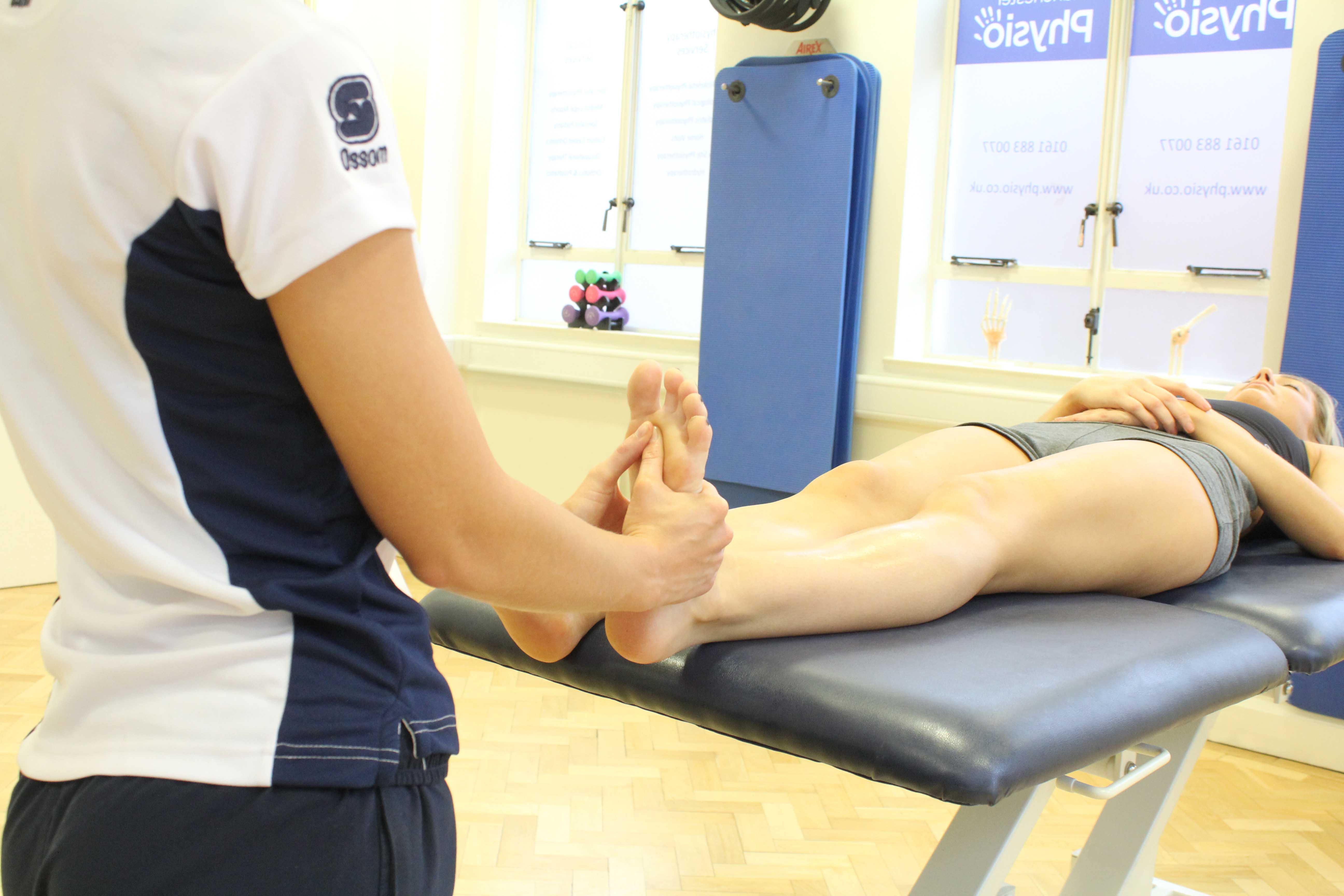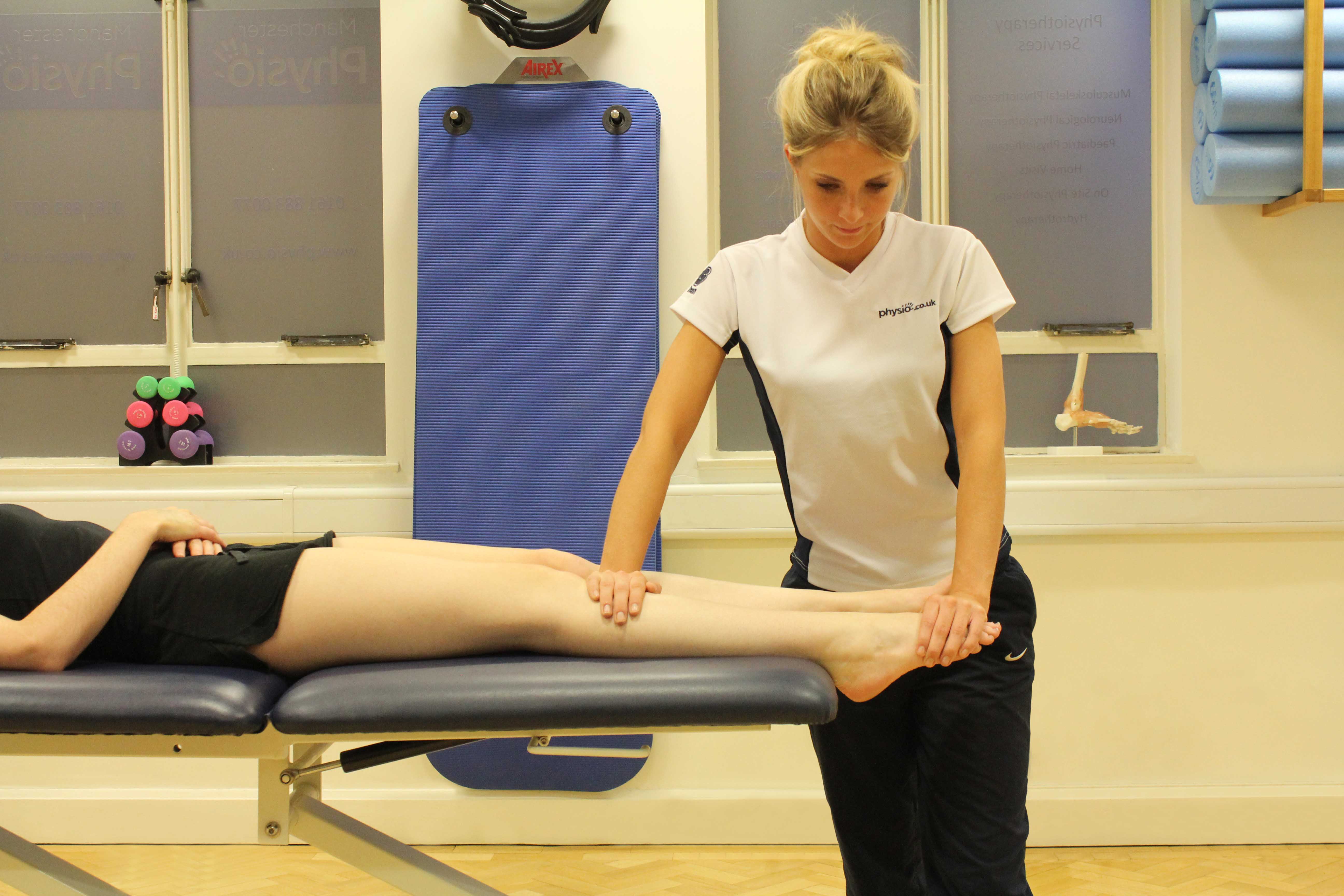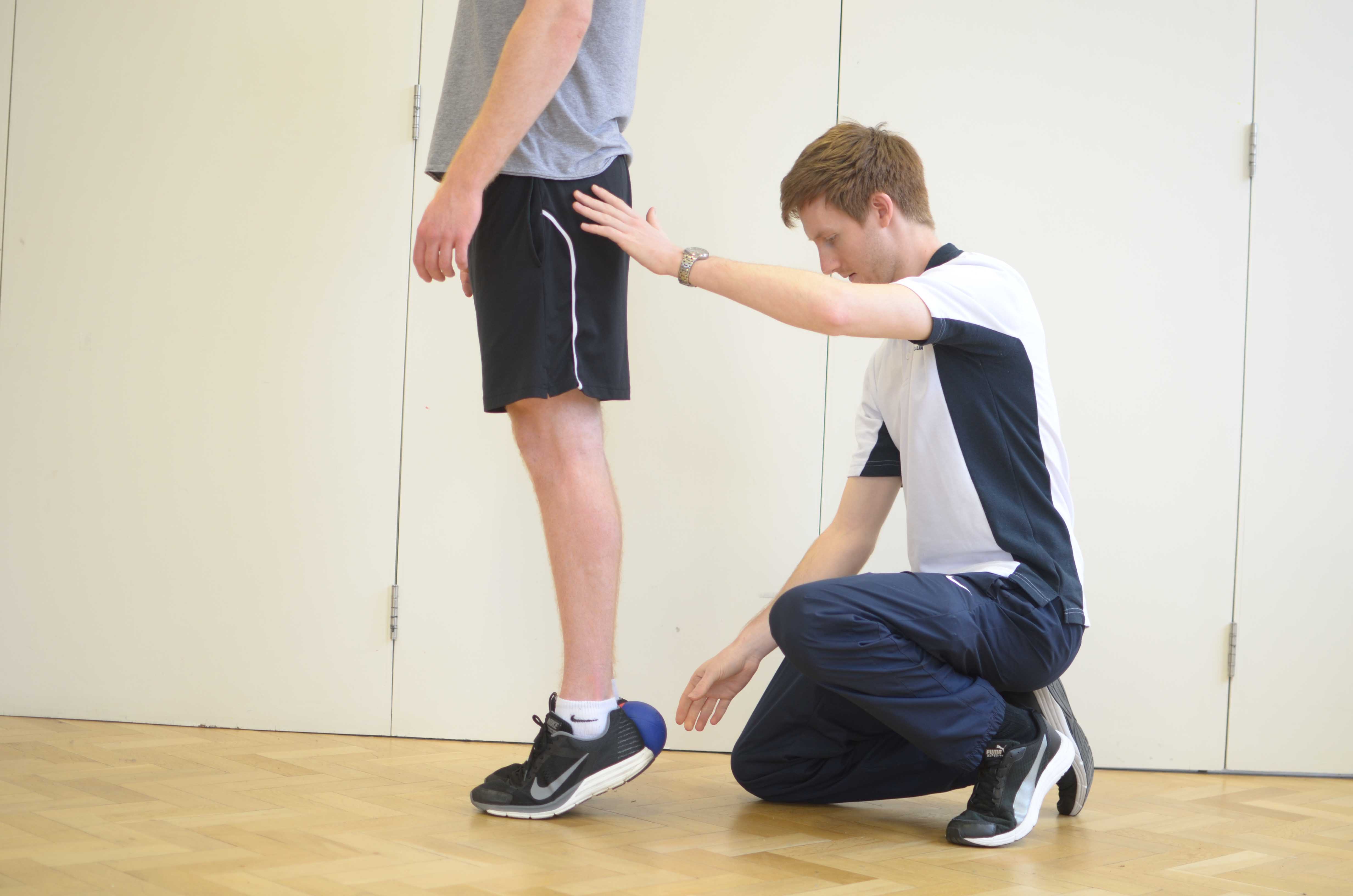Hallux Valgus – Fusion Surgery (Arthrodesis)
Fusion surgery (Arthrodesis) may be used to treat severe or recurrent bunions (Hallux Valgus).
Bunions also known as Hallux Valgus are enlargements of the tissues or bone at the base of the big toe, Causingmis-Alignment of the big toe joint. In severe cases this mis-alignment causes pain and limited range of movement, and surgery may be indicated.
 Above: Accupressure massage of the planta fascia under the foot
Above: Accupressure massage of the planta fascia under the footFusion surgery(Arthrodesis) for a bunion may be used if a previous Scarf Osteotomy to realign the big toe has been unsuccessful.
Fusion surgery (Arthrodesis) for a bunioninvolves an incision being made on the top of the foot extending from the big toe to the mid-foot.The big toe joint is then correctly positioned and fixed by wires or a screw. This fusion surgery (Arthrodesis) basically makes the big toe joint redundant – once complete you will have no movement within the affected big toe joint, it will be fixed into place.
Fusion surgery (Arthrodesis) is not ideal due to all range of movement at the big toe joint being lost, however the reduction in pain may make it worthwhile.
Physiotherapy is important following bunion fusion surgery (Arthrodesis) to reduce pain, maintain strength and develop a correct walking pattern.
 Above: Passive stretch of the connective tissues in the foot
Above: Passive stretch of the connective tissues in the footSymptoms after surgery
You are likely to experience pain following fusion surgery (Arthrodesis); however this can usually be controlled with pain relief medications. Following the operation you should expect to wear a surgical boot for around the first 6 weeks.
Physiotherapy after surgery
0-6 weeks It is advised you keep your foot elevated when resting for the first couple of weeks as this will help control the swelling. Ice will also help keep the swelling under control. Whilst you are off your feet, it is important to keep the rest of your joints moving so you don’t lose range of movement or strength. Our physiotherapists will be able to create a personalised exercise plan to work on your stamina and on maintaining strength round the unaffected joints of the body.
6- 12 weeks Upon removal of the surgical boot, our physiotherapists’ main focus will be on practising walking. As the fused joint previously had a role in propulsion during walking, walking style is likely to be altered. Once you are confident with your modified walking pattern we will begin to work on more complicated everyday situations such as walking up stairs, tackling uneven terrain, and even getting you back into driving. Our physiotherapists will focus on your personal goals and work towards achieving what it is you want to achieve.
 Above: Progressive strengthening exercises for the foot and ankle
Above: Progressive strengthening exercises for the foot and ankle12 weeks + It is likely to be between 3-6 months before you are able to return to full function in recreational activities. Physio.co.uk will continue to support you and provide advice and recommendations about the best way to returning to what it is you’d like to return to.
Summary
Fusion surgery for Hallux Valgus may be used to treat severe or recurrent bunions if previous surgery been unsuccessful. The operation involves realigning the joint at the base of the big toe into its correct position and fixing it into this position with wires or a screw. Once complete you will have no movement within the previously affected joint, it will be fixed into place. Although not ideal due to the complete loss of movement within the joint, it may be worthwhile to reduce the pain alone. Physio.co.uk will support you following your operation by producing a tailored week-by-week plan to maintain strength during your period within your boot, and work on your walking when able. Our physiotherapists will continue to work with you until you are confident in carrying out everyday tasks, and have achieved your personal goals.
 Above: Trigger point massage of the planta fascia under the foot
Above: Trigger point massage of the planta fascia under the footCall Physio.co.uk now on 0330 088 7800 for more information or to book an appointment please contact us.

 0330 088 7800
0330 088 7800


































